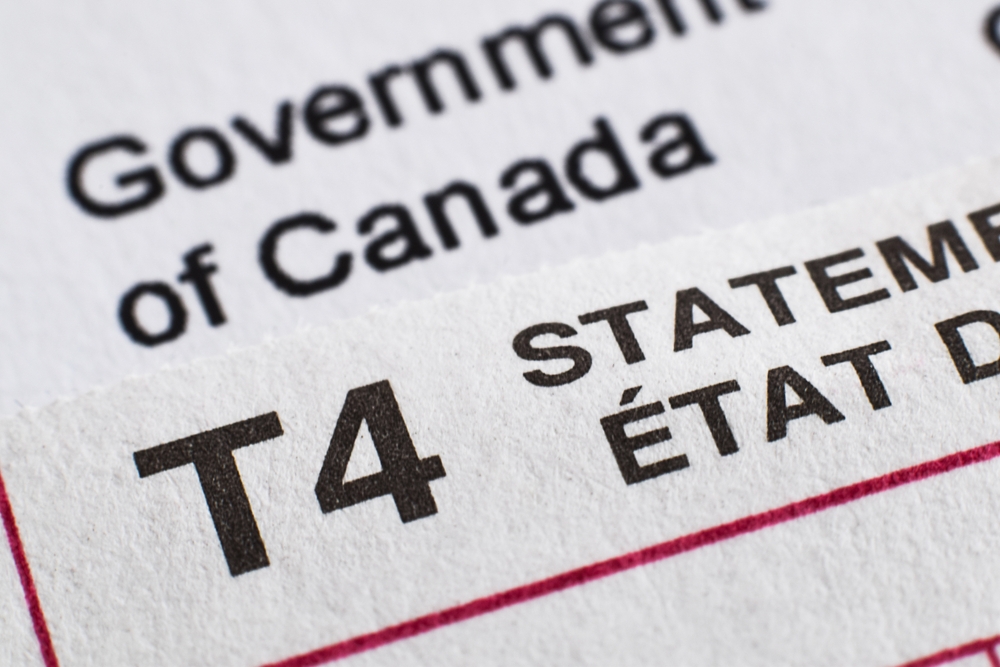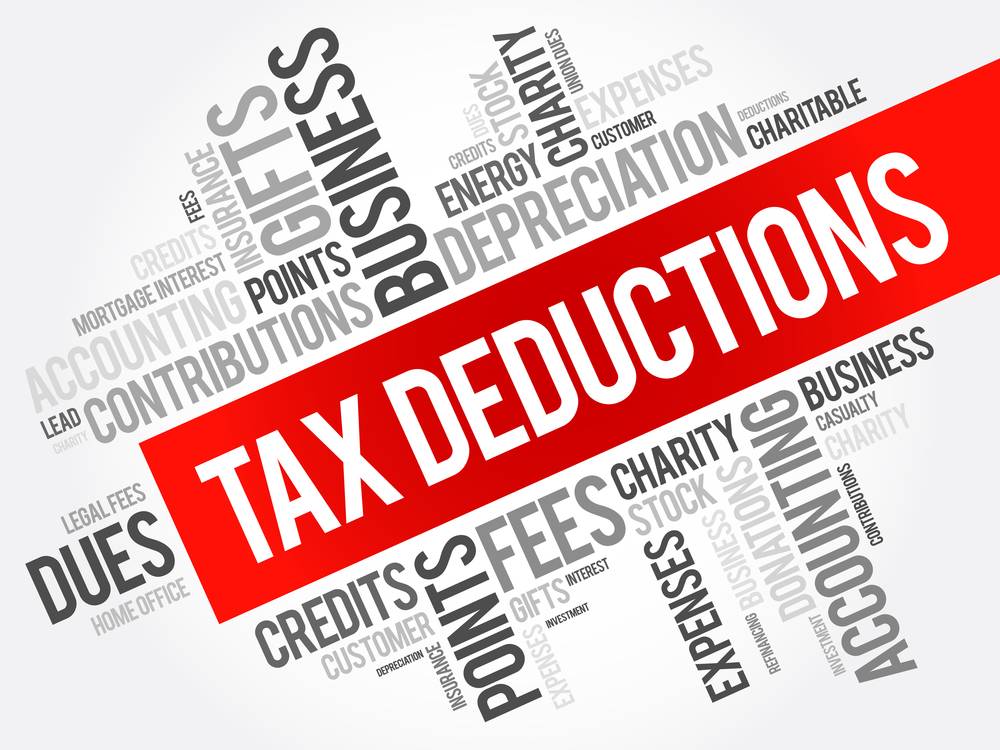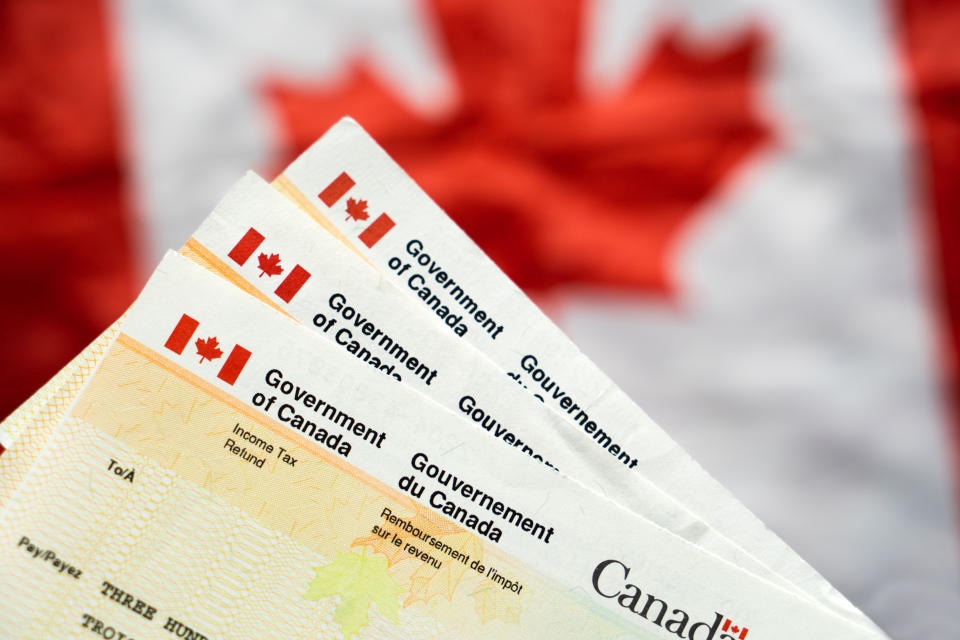Canadian Personal Income Taxes: Filing your taxes can be confusing and time-consuming, but it doesn’t have to be. In this guide, we’ll walk you through the process step-by-step, making it as simple as possible. Whether you’re a first-time filer or a seasoned pro, our easy-to-follow instructions and helpful tips will help you file your taxes like a pro.
We’ll cover everything you need to know, from gathering your documents to claiming deductions and credits. We’ll also give you some tips on how to avoid common tax mistakes.
So, whether you’re looking to get your taxes done quickly and easily or you want to make sure you’re getting the most out of your return, this guide is for you.
So, what are you waiting for? Let’s get started!
Different Ways to File Your Canadian Personal Income Taxes
There are many way to file your Tax Return. When it comes to filling your Canadian Personal Income Taxes, you have mainly three ways that i mentioned below. which you can used to file your Taxes Return.
a. Online: The most convenient and popular method. Use approved tax software or the Canada Revenue Agency’s (CRA) free online service. It’s user-friendly and can speed up your refund process.
b. By Mail: If you prefer a more traditional approach, you can fill out paper forms and mail them to the CRA. Just remember, the processing time might be longer.
c. By Phone: If you have a simple tax situation, you may be eligible for the CRA’s Telefile service. It allows you to file your taxes over the phone.
Required Documents for Filing Federal Tax Return

First Step to file the Federal Tax Return in a smooth way is to gather the essential documents that required for Filling the Tax Return.
a. T4 Slips: Your employer will provide you with this slip, reporting your employment income and deductions.
b. T5 Slips: If you earned investment income from dividends or interest, you’ll receive T5 slips from your financial institutions.
c. Other Forms: Keep an eye out for any other slips that report your income, such as T4A (scholarships/bursaries) or T4E (employment insurance).
Estimating Your Taxable Income
Your taxable income is your total income minus any deductions and credits. Review your T4 and T5 slips carefully to ensure you haven’t missed anything.
Calculating Your Tax Liability
The CRA uses progressive tax rates, which means the more you earn, the higher your tax rate. There are federal and provincial tax brackets, so be sure to check both.
Check Federal Taxable Income Slab (CAD) for year 2023 by click on the link below for calculating the Taxable Income and Tax thereon: What is Canadian Federal Tax? | A Beginner’s Guide to Canadian Personal Income Taxes
Claiming Deductions and Credits

There are various deductions and credits that you can use to Reduce your tax burden.
When you file your taxes in Canada, you can claim deductions and credits to reduce your taxable income. This can lower your overall tax bill. Here are some common deductions and credits you might be eligible for:
- Basic Personal Amount: Everyone in Canada can claim this non-refundable tax credit. It reduces your taxable income by a certain amount. The amount changes every year, so make sure you check the current amount for the tax year you’re filing.
- Medical Expenses: You can claim eligible medical expenses for yourself, your spouse, and your dependents. This includes things like doctor’s visits, prescription drugs, and medical equipment.
- Charitable Donations: You can claim non-refundable tax credits for donations you make to registered charities. Keep your donation receipts in case the government asks to see them.
- Child Care Expenses: If you paid for child care so you or your spouse could work, study, or run a business, you might be able to claim some of those expenses.
- Tuition and Education Credits: If you or your dependents are in post-secondary school, you might be eligible for tuition and education-related credits.
- Home Buyers’ Amount: If you bought your first home during the tax year, you might be able to claim a non-refundable tax credit.
- RRSP Contributions: Contributions to a Registered Retirement Savings Plan (RRSP) can be deducted from your income, which could reduce your taxable income and defer taxes until retirement.
- Interest on Student Loans: If you paid interest on qualifying student loans, you might be able to claim a tax credit.
- Disability Tax Credit: If you have a severe and prolonged impairment in physical or mental functions, you might be eligible for the disability tax credit.
- Public Transit Pass Credit: In some provinces, you can claim a non-refundable tax credit for the cost of public transit passes.
Filing Your Tax Return
If you’re filing online, the tax software will guide you through the process step-by-step. If you prefer paper filing, carefully fill out the forms and mail them to the address provided by the CRA.
Paying Your Taxes
If you owe taxes, the deadline to pay is typically April 30th. You can pay online through your bank, set up a pre-authorized debit, or mail a cheque or money order to the CRA.
Common Tax Mistakes to Avoid while Filling Federal Tax Return

Here are some list of Mistakes that need to avoid while filling Federal Tax Return.
- Incorrect Personal Information: Double-check your name, Social Insurance Number (SIN), and other personal details to ensure they are accurate. Any errors can lead to processing delays or problems with your tax assessment.
- Math Errors: Simple math errors can lead to incorrect calculations and may result in overpayment or underpayment of taxes. Use tax software or online calculators to reduce the risk of such errors.
- Late Filing: Filing your tax return after the deadline (usually April 30th) can result in late-filing penalties and interest charges on any taxes owed. Make sure to file your return on time or request an extension if needed.
- Omitting Income: Ensure you report all sources of income, including employment income, self-employment income, rental income, investment income, and any other earnings. The CRA receives information from various sources, such as employers and financial institutions, so be sure to include all income to avoid potential audits or penalties.
- Not Reporting Foreign Income: If you have foreign income, such as income from investments or employment abroad, you are still required to report it on your Canadian tax return. Failure to do so can result in penalties.
- Ignoring Deductions and Credits: Be aware of all the deductions and credits you may be eligible for, such as those mentioned in the previous response. Utilize these tax-saving opportunities to reduce your tax liability.
- Incorrectly Claiming Expenses: If you’re self-employed or have business expenses, make sure you accurately claim them. Keep detailed records and only claim legitimate expenses that are related to your business or employment.
- Not Keeping Proper Records: It’s crucial to keep all relevant receipts, documents, and records to support your claims in case the CRA asks for verification. Keep these records organized and easily accessible..
- Using Outdated Forms: Always use the most current tax forms and software to avoid outdated information or potential errors.
- Ignoring Eligibility for Tax Benefits: Research and stay informed about various tax benefits and changes in tax laws that may apply to your situation. For example, there may be new credits or benefits introduced by the government that you could be eligible for.
- Not Reviewing Before Submitting: Carefully review your tax return before submitting it to ensure accuracy and completeness. Double-check all information to catch any mistakes or omissions.
Tax Planning Tips
A little tax planning can help you in saving the taxes and smooth filling of personal income tax.
a. Stay Organized: Keep your tax-related documents in one place to make filing easier.
b. Contribute to RRSP: Contributing to your RRSP can help lower your taxable income.
c. Explore Tax-Free Savings Accounts (TFSA): Invest in a TFSA to grow your savings tax-free.
Filing your Canadian personal income taxes may seem overwhelming at first, but with the right information and resources, you can tackle it with ease.
Remember to gather all your necessary documents, claim relevant deductions and credits, and file on time. If you’re uncertain about anything, don’t hesitate to seek help from tax professionals or the CRA.
Disclaimer: This blog post provides general information only and should not be considered as professional tax advice. For specific tax inquiries, please consult a qualified tax professional or visit the official website of the Canada Revenue Agency (CRA).
Get The Latest Information On Business, Finance, Investment, Brand Building, Lifestyle, Entertainment, And Billionaire Quotes On Edueasify.
